Now Reading: 10 Best Places to Visit in Kutch-Bhuj for Culture, Nature & History
-
01
10 Best Places to Visit in Kutch-Bhuj for Culture, Nature & History

10 Best Places to Visit in Kutch-Bhuj for Culture, Nature & History
1. White Desert of kutch
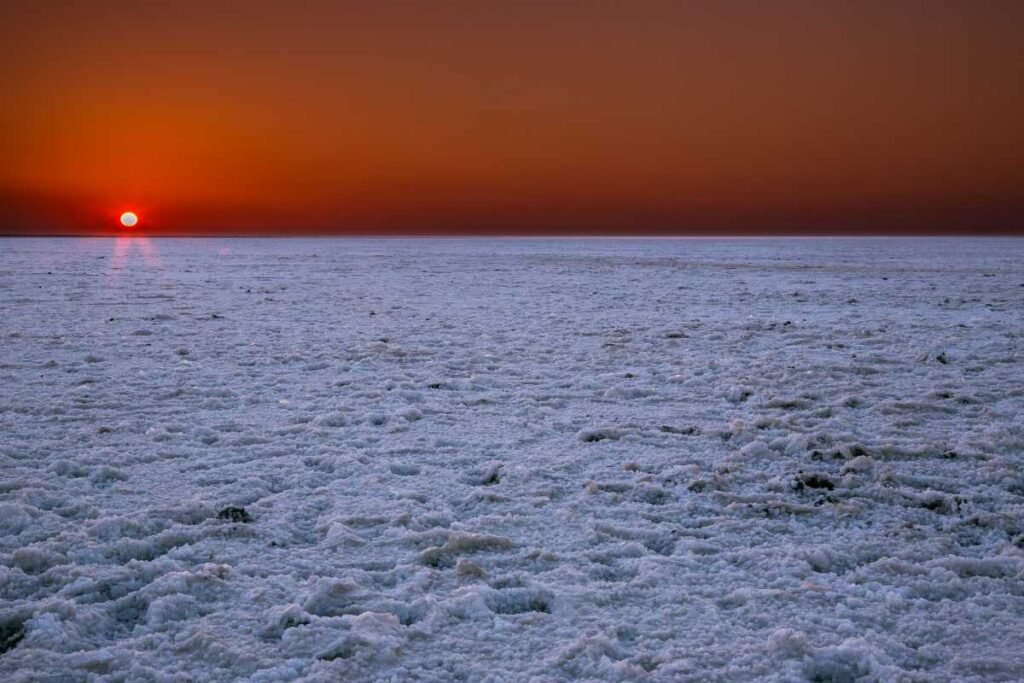
A stretch of immaculate white salt known as the White Desert occupies the entire Great Rann of Kutch which extends across land from the Indus River mouth to the Gulf of Kutch. Travelers from around the world come to this breathtaking salt desert which holds the title of being the biggest salt desert on the planet.
A Natural Wonder & Ecological Treasure
The White Desert in Kutch shows no comparable natural landscape to other parts of India. People find both ecological and touristic value in this enchanting salt flat though its dimensions make it an essential ecological space. Multiple wildlife sanctuaries together with floral reserves and wetland preservation sites make the location an indispensable ecological domain for biodiversity.
Security operations focus on the region because of its positioning near the India-Pakistan border. Several Bollywood movie productions have elected Kutch as their location whereas the region remains under tight border control.
Rann Utsav: A Celebration of Culture & Adventure
A principal highlight of the White Desert exists in the Rann Utsav which operates during the period between November/December and February. During this energetic celebration under moonlight tourists numbering over 8,000 to 9,000 visit the festivities from various parts of the world.
What to Expect at Rann Utsav?
- Traditional Folk Performances include live musical and dance performances that showcase the rhythms of Gujarat.
- Camel Rides & Desert Safaris – Explore the vast salt plains in the most authentic way.
- The fantasy activities include trying paragliding as well as accessing ATV rides and other adventure choices.
- The local artisans provide exquisite Kutch embroidery and jewelry alongside souvenir creations which you can discover through shopping in this region.
- Stay at comfortable desert camps which combine the magic of Rann Utsav with first-class furnishings.
- People from various walk of life whether they are newly married couples escapists to adventure enthusiasts will find activities to suit their interests at the Rann Utsav.
The Ecological Importance of the White Desert
Situated over 30,000 sq. km the Great Rann of Kutch, Banni Grasslands and Little Rann of Kutch form the Kutch district. The landscape which belongs to Thar Desert functions as a critical component for the ecological stability of western Indian territories.
- The White Desert transforms into a bright white salt landscape after water evaporates in the period from November until February.
- Although desert-like in nature the region provides an environment suitable for numerous wildlife species including Indian Wild Ass and local birds and desert plants.
- Farming proves difficult in this area because the soil cycles create unreliable vegetation growth patterns. Women from Kutch preserve themselves by using their skills at making handmade jewelry and complex embroidery to produce the celebrated Kutch clothing.
2. Mandvi Beach
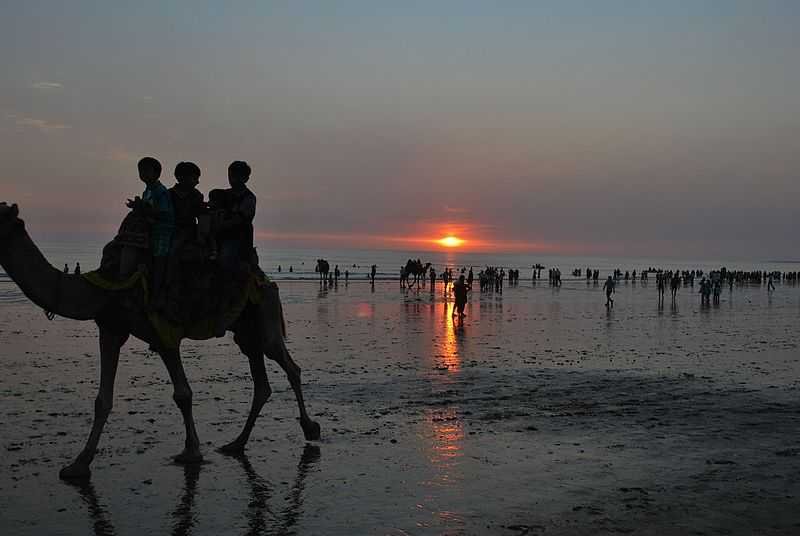
The Kutch region of Gujarat hosts the peaceful and pristine Mandvi Beach which ranks as a leading location for tourists in the area. Mandvi Beach serves as an ideal beach getaway because visitors can enjoy camping activities and water sports activities.
The Vijay Vilas palace estate in Bhuj marks the location of Mandvi Beach which remains an isolated beach spot that provides clean waters and attractive scenery. A stroll from dawn to dusk will enable you to see the sun sink beneath the horizon while you identify various Kutch birds in their natural habitat.
Visitors can spend time riding camels across the entire estate while having their bodies gently bounce atop these regal creatures and they can also do yoga while listening to ocean waves. Nature’s serenity at Mandvi Beach offers the most attractive hallmark that entices visitors to enjoy its enchanting meeting with natural beauty.
Things to Do at Mandvi Beach
- The destination provides multiple water sport activities including water scooter and ocean swimming and parasailing as well as banana boat ride so visitors can experience a wild vacation.
- The adventure facilities at this location also feature zorbing beside quad biking and dirt biking together with horse rides and camel rides.
- The food options at Mandvi Beach are continuous until you decide to satisfy your appetite with the tandoori treats that make their way to this beach spot.
- Drinking coconut water during sunset becomes a memorable experience that no one will regret.
Camping at Mandvi Beach
The opportunity to camp at Mandvi Beach awaits everyone who plans to do so. Just ten tents located beside Vijay Vilas Palace make this small excellent accommodation property. The facility operates with limited accommodations because it exists in distance from the main Mandavi city district. This camp area extends across a well-kept space that provides scenic views of the oceanfront. Each tent at this facility offers both comfort and spaciousness and staff members represent high levels of courtesy. The camps provide both prosperous accommodation and tasty food choices at reasonable prices to their guests. The beach area provides privacy while maintaining its isolated position and offers maintained cleanliness as it functions more like an escape place instead of a full-fledged vacation spot.
- The camp package includes various exciting activities among others. At the beach camp guests may participate in offered activities such as nature walks and bird watching together with beach volleyball and beach football and indoor games and lakeside picnic to Prasagar which the camp authorities provide.
- Tourists visiting Mandvi Beach can access several neighboring attractions
- Visitors can easily access the Vijay Vilas Palace from Mandvi Beach while staying at the attraction point located 10 km away from the beach.
- The Shyamji Krishna Varma Memorial provides visitors with an additional attraction that lies 8 km away from the beach. Mukhdani houses the important shipbuilding yard of Mandvi which exists approximately 4 kilometers from Mandvi Beach.
Visitors should walk for 10 minutes to reach the Sheetal Parshwa Jinalay when traveling to the shipbuilding yard. Travelers must experience the Mandvi Port which lies around 4 kilometers west of Mandvi beach.
3. Kutch Desert Wildlife Sanctuary
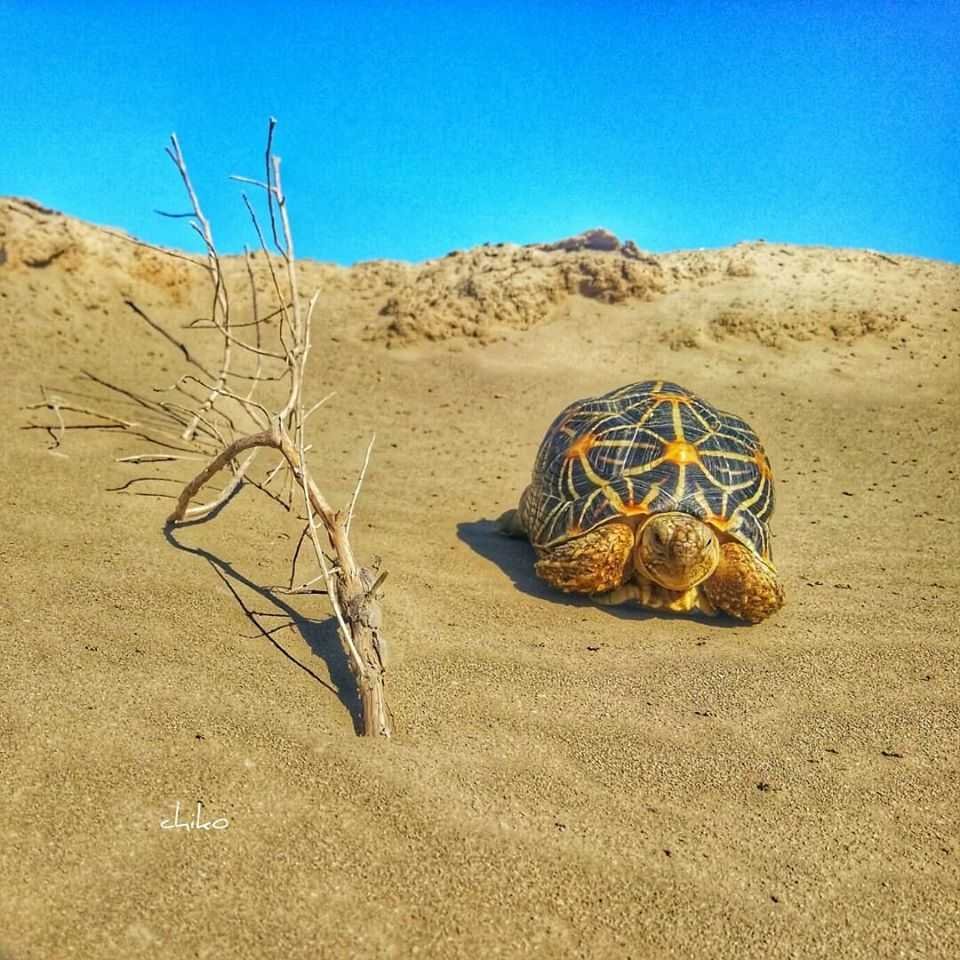
Timings : 6:00 AM to 6:00 PM
Entry Fee : Weekdays
Indian Visitors – INR 250
Foreign Visitors – INR 1200
Weekends
Indian Visitors – INR 280
Foreign Visitors – INR 1500
Still Camera
Indian Visitors – INR 50
Foreign Visitors – INR 350
The Kutch Desert Wildlife Sanctuary positions itself as the world’s largest periodical saline wetland and exists 100 kilometers from Bhuj. The sanctuary covers 7,505.22 sq. km of land that serves as both a botanical paradise and an important home for various wildlife species.
Flamingo City: A Birdwatcher’s Paradise
The sanctuary receives its common name “Flamingo City” because thousands of flamingos arrive to breed in this area every season. A natural display of these superb birds takes place against the unique landscape of desert salt fields.
At this sanctuary visitors can spot numerous migratory and resident bird species while flamingos are its most notable inhabitants.
- Pelicans
- Cranes
- Storks
- Eagles and Falcons
- Birdwatchers alongside wildlife photographers find their perfect setting in the Kutch Desert Wildlife Sanctuary where they can observe natural habitats housing various species.
A Link to Ancient Civilizations
The famous 5,000-year-old Harappan civilization site of Dholavira exists in proximity to this sanctuary which stands as a vital archaeological discovery of India. Tourists at the sanctuary can discover different fossil remains which enhance its geological and historical features.
A Unique White Landscape
The excessive accumulation of salt in the sanctuary creates an extraordinary white surface which further enhances its dreamlike appearance. Some regions of the sanctuary are blocked off to public access because of its border proximity to India and Pakistan. A protective portion belongs to BSF (Border Security Force) along with regions designated as Border Security Force areas to ensure continuous safety of the districts.
Why Visit Kutch Desert Wildlife Sanctuary?
Rare Wildlife Encounters: Spot flamingos, wild asses, and other desert species.
Birdwatchers will find this place perfect as they can monitor thousands of migrating birds along with all resident species.
Travelers can reach the Dholavira Harappan ruins which exist nearby.
View the mesmerizing white valley of Scenic White Desert where volcanic rocks form a bed of salt under clear skies.
Conclusion
As a sanctuary Kutch Desert Wildlife Sanctuary merges natural heritage with historical sites along with its beautiful geologic views. This exceptional site caters to wildlife fans together with birdwatchers and history buffs who want to enjoy an extraordinary adventure.
4. Aina Mahal
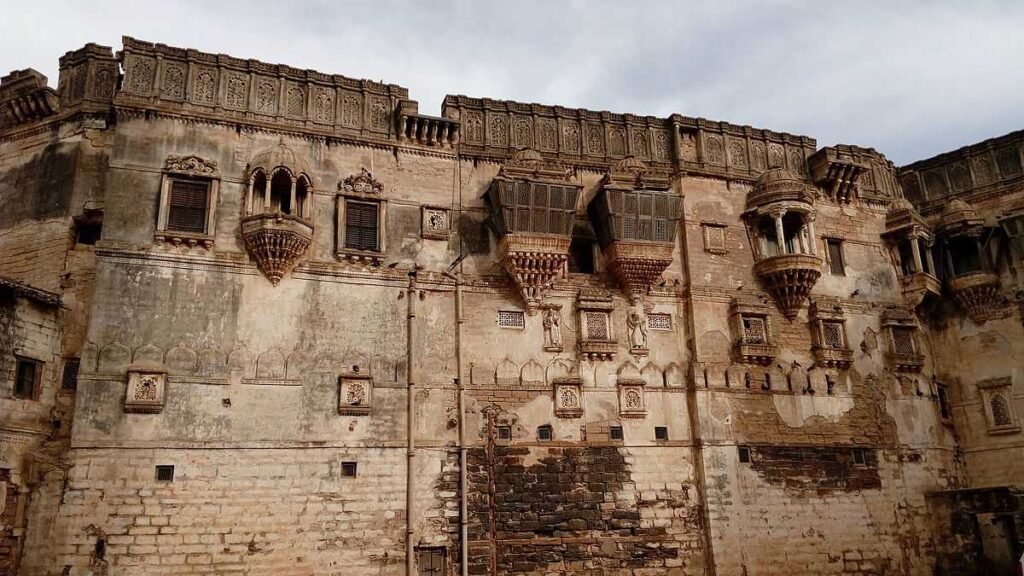
Timings : 9:00 AM – 12:00 PM, 3:00 PM – 6:00 PM
Time Required : 1-2 hours
Entry Fee : Aaina Mahal: INR 10,
Photography: INR 30
Located at the center of Bhuj stands the Aina Mahal Palace which people know as the “Hall of Mirrors” as a stunning tribute to royal display and artistic craftsmanship. This splendid palace emerged during the rule of Lakhpatji in the middle of the 18th century before it became a shimmering reflective dreamland with detailed decorations and refined European artistic touches.
The Vision Behind Aina Mahal
The outstanding Aina Mahal project was designed by Ram Singh Malam who trained his skills for 17 years in Europe to become a master. After returning to India he received fame when he entered the royal court of King Lakhpatji. Malam received the charge from the king to create and construct this palace because he planned to build something extraordinary. She used antique clocks and glass-covered walls with exotic tile work to design Aina Mahal which became an astounding palace of innovation.
The Tragic Impact of the 2001 Bhuj Earthquake
During the catastrophic 2001 earthquake of Bhuj Aina Mahal faced severe destruction that reduced its former glorious state. The earthquake of 2001 caused substantial damage to the framework of Aina Mahal by destroying many of its bright reflective surfaces alongside elaborate decorative work and antique possessions. Restoration teams have dedicated their efforts to restore the palace which now allows people to interact with its lovely features.
Exploring Aina Mahal Today
You can walk to Aina Mahal which stands at the northeast corner of Hamirsar Lake because it is accessible to most areas of Bhuj. A visit to this architectural gem offers:
- Radiant playing lights shine through the Grand Hall of Mirrors because its walls consist of glass pieces.
- Antique Clocks & European Influences – A stunning mix of Indian craftsmanship and European luxury.
- The tiles and elaborate carvings of Aina Mahal represent master artistry from craftsman Ram Singh Malam.
- Members of the public can admire the palace’s exterior complex through its elegant doorways and balconies which sport intricate detailing around the windows.
Why Visit Aina Mahal?
You can experience Kutch royal dynasty splendor through a royal historical journey at this location.
Architectural Masterpiece – A rare blend of European and Indian design.
Cultural & Artistic Significance – Experience the legacy of Ram Singh Malam’s craftsmanship.
Ideal Photography Spot – Capture the ornate beauty and mirror reflections of the palace.
5. Hamirsar Lake

Hamirsar Lake serves as the central attraction of Bhuj while resting against the Kutch district’s hot western edge in Gujarat. Throughout many centuries the artificial lake has served as a vital water reserve for the locals while representing local community accomplishment.
A Historic Legacy
The rulers of Kutch constructed Hamirsar Lake with the purpose of supplying water to Bhuj residents for their household needs. Rao Hamir founded the lake 450 years ago upon his rule as a Jadeja ruler. He was also the father of Rao Khengarji who would establish the Jadeja dynasty in Kutch.
A complex system of channels and tunnels brought continuous water supply to Bhuj by extracting water from three different rivers into town reservoirs. The carefully designed network operated without interruptions for many generations to maintain Bhuj.
Impact of the 2001 Earthquake & Revival Efforts
The water channels sustaining Bhuj experienced critical damage from the devastating 2001 Bhuj earthquake which inhibited the town from obtaining its vital water supply. People from both the municipal government and the local population united to recover the leaking water system.
The revival efforts led to the restoration of potable water supply at Hamirsar Lake in 2003 after persistent work on the water channels. The people of Bhuj demonstrated both unity and resilience which allowed them to achieve this extraordinary milestone.
Hamirsar Lake Today
The vital function of supplying water to the city aside Hamirsar Lake attracts large numbers of people who want to relax there. Visitors can:
- The lake provides peaceful surroundings for people who want to walk on its banks
- Witness migratory birds during winter
- People visiting Bhuj can admire how the city’s antique landmarks reflect in the lake waters
- Guests can find relaxation by spending time in the forested areas surrounding the lake.
- Anyone who loves history and nature along with people seeking serenity should place Hamirsar Lake near the top of their Bhuj exploration list.
Why Visit Hamirsar Lake?
- A Historic Manmade Lake – Built centuries ago with an advanced water management system.
- The location demonstrates community resilience because it was restored following the devastating 2001 earthquake.
- Scenic Beauty & Birdwatching – A perfect spot for nature lovers.
- A Peaceful Escape in Bhuj – Ideal for relaxation and leisure.
6. Kutch Bustard Sanctuary

The Lala Prajan Sanctuary known popularly as Kutch Bustard Sanctuary occupies its position in Jakhau village within Naliya Taluka Gujarat for protecting the Great Indian Bustard (GIB). The sanctuary maintains its importance through its 2 square kilometer area while protecting multiple bird species and desert wildlife within its space.
A Sanctuary for Bustards and More
Protecting the endangered Great Indian Bustard remains the main purpose of the Kutch Bustard Sanctuary because it serves as a sanctuary for three bustard species among many other bird species.
The Kutch Bustard Sanctuary houses an array of bird species with several prominent species present in its habitat.
- Harriers
- Common Cranes
- Black Partridges
- Sand Grouses
- Black and Grey Francolins
- Spotted and Indian Sandgrouse
- Quails, Larks, and Shrikes
- Coursers and Plovers
- Imperial Eagles
- Flamingos, Herons, and Egrets
- Sandpipers and many more
Birdwatchers and wildlife photographers find Kutch Bustard Sanctuary a brilliant opportunity to observe rare birds and migrating species while they naturally inhabit the habitat.
Wildlife at Kutch Bustard Sanctuary
In addition to the birdlife at the sanctuary wild animals like Indian Wolves and Caracals (wild cats) plus Desert Cats and Jackals and Striped Hyenas live together with Foxes and Mongooses and the Blue Bull (Nilgai) and Chinkara (Indian Gazelle) and Spiny-tailed Lizards and Various types of snakes exist in the sanctuary.
- Indian Wolf
- Caracal (wild cat)
- Desert Cat
- Jackal
- Striped Hyena
- Fox and Mongoose
- Blue Bull (Nilgai)
- Chinkara (Indian Gazelle)
- Spiny-tailed Lizard
- Various types of snakes
The arid desert conditions along with dry scrub vegetation establish Kutch Bustard Sanctuary as an excellent territory which highlights the essence of Kutch’s delicate ecological balance.
Why Visit Kutch Bustard Sanctuary?
- The Great Indian Bustard represents one of India’s most endangered bird species and visitors have a rare opportunity to observe it at the Kutch Bustard Sanctuary.
- Birdwatchers will find their paradise within these grounds since they support migratory birds and residents.
- Diverse Wildlife – From wolves and caracals to gazelles and hyenas.
- Scenic and Serene – A peaceful retreat into nature.
7. Narayan Sarovar Sanctuary
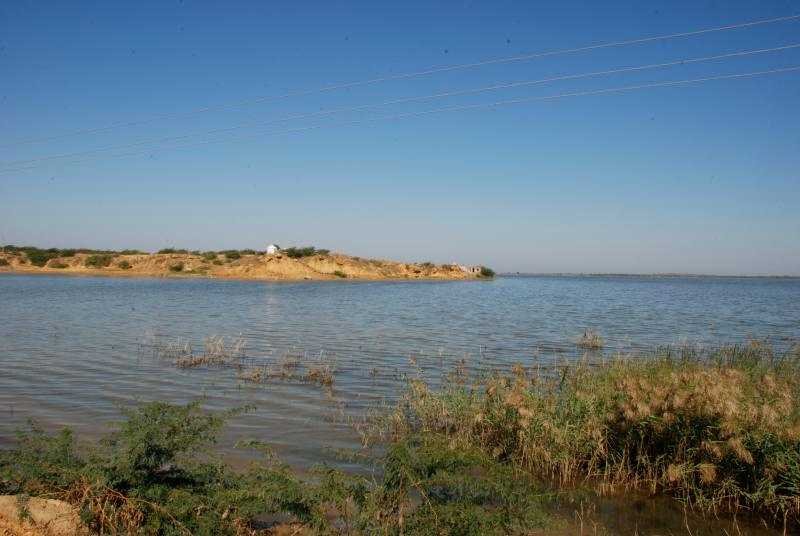
Narayan Sarovar Sanctuary exists approximately 125 kilometers outside of Bhuj and represents a distinctive ecological reserve in Gujarat. Prices within this sanctuary known as Narayan Sarovar Chinkara Sanctuary cover 444 square kilometers of arid Kutch district terrain.
Wildlife at Narayan Sarovar Sanctuary
Wildlife enthusiasts will find heaven in the sanctuary because it welcomes different mammal species. The sanctuary houses several interesting animal species which include:
- Chinkara (Indian Gazelle) – The highlight of the sanctuary.
- Indian Wolves are among the threatened predators which inhabit this particular area.
- Wildcats – Stealthy hunters of the desert.
- The Desert Foxes possess adaptations which allow them to survive in the demanding deserts.
- Honey Badger – A fearless and rare species.
- Wild Boar populations commonly appear throughout the untamed regions of the wilderness.
A Haven for Birdwatchers
Narayan Sarovar Sanctuary represents an ideal birdwatching site since it houses 184 types of avian species. Various important bird species exist at this sanctuary among which:
- The Great Indian Bustard stands as among the most endangered bird species in India today.
- Lesser Florican – A rare and elusive species.
- Houbara Bustard – A visitor from Central Asia.
- Black Partridge – A striking and vocal bird.
- Waterfowl – Thriving in the seasonal water bodies.
Rich Flora of the Sanctuary
The sanctuary contains many different plant species reaching a total of 252 species which thrive in its semi-arid environmental conditions. Plants that stand out in the sanctuary consist of:
- Gorad – A drought-resistant tree.
- Babul – Known for its medicinal properties.
- Kerdo – A vital plant for the desert ecosystem.
- Best Time to Visit
- Visitors should plan their trip to Narayan Sarovar Sanctuary during the period from October to March for pleasant climate conditions and increased chances of wildlife encounters.
Final Thoughts
Visitors can find exceptional biodiversity opportunities during their trip to Narayan Sarovar Sanctuary in Gujarat. The sanctuary provides visitors of any wildlife interest with exceptional encounters throughout Kutch’s wilderness area.
8. Mata no Madh
Timings : Mangala Aarti – 5:00 AM
Incense Paste Aarti – 9:00 AM
Sandhya Aarti – 6:00 PM
Entry Fee : No entry fee

Mata no Madh serves as a temple for Maa Ashapura at a distance of 138 kilometres southwest of Bhuj city in Gujarat. The Kuldevi temple of Jadeja known as Mata no Madh stands in its place of veneration west of Kakkadbhit. Natural calamities destroyed the temple two times over a 1200-year period.
Sunderji Saudagar built the present-day temple structure. The current structure represents an officially grander version built with improved dimensions. Visitors can enjoy a spectacular view of the main temple because it rises prominently above Bhuj’s skyline. Religious activities of great importance unfold at Mata No Madh where the Hindu festivals Diwali and Navratri are celebrated with exceptional excitement.
Mata No Madh Aarti Timings
- Mangala Aarti – 5:00 AM
- Incense Paste Aarti – 9:00 AM
- Sandhya Aarti – 6:00 PM
- Facilities at Mata No Madh
- In addition to the religious services the facility provides sleeping accommodations upon special requests. Reserving rooms in advance at the accommodation facilities is not obligatory but prior reservation helps to secure your lodging arrangements. The facility comprises two large halls together with four shared accommodation rooms across twenty-three general rooms as well as thirty-three non-air-conditioned rooms equipped with personal bathrooms. Check with Chachrakund because this place offers three additional massive facilities for communal housing and twelve separate sleeping areas. The trust offers free mattresses and quilts in combination with electricity and water to every pilgrim visiting the site.
Weekly meals for every pilgrim are served at Mata no Madh Canteen with no cost throughout the entire week. The establishment offers extended service for preparing Jain-diet meals after receiving early notice from guests. The offering of food to pilgrims represents nutritious and pleasing meals which are completely free of charge. The site offers both filtered and cool drinking water available for visitors.
The trust would organize Prasad/ Bhojan services both for Manta ceremonies and for ceremonial celebrations that pilgrims want to observe.
The worship place of Maa Ashapura provides a peaceful sanctuary which creates pleasant conditions for its visiting devotees. The deity receives the title Desh Devi which means Goddess of the people. People visiting the temple can both pray for their desires and tour the attractive temple structures. Mata no Madh demonstrates traditional Indian architectural style through its elaborate intricate carvings.
History of Mata No Madh
Construction of Mata no Madh took place in the 14th century thanks to Anagor and Ajo who served as ministers for Lakho Phulani who belonged to the Bania caste. Due to an earthquake the temple received complete destruction in 1819. Sunderji Shivji fulfilled his restoration duties at Mata No Madh along with Mehta Vallabhaji who both belonged to the Brahmakshatriyas. An earthquake hit Mata No Madh during 2001 which caused serious harm to the building. Believers later gained access after restorers finished their work on the building following damages from an earthquake.
The Mata no Madh connects to two human groups called Bhuvas and Kapadis which makes up the descendant generation of two brothers. Devotees do not come from the Bhuvas classification. The Kapadis devote themselves to the lifestyle which excludes all excitement of worldly life.
The temple finds mention in Maa Ashapura Rudrayamal Tantra as well as other Puranas although ancient scripts. During Navratri Devchand the Bania made his journey through the temple region while he sought to sell his manufactured goods. The devotee made his decision to stay at Mata no Madh for Navratri because he had deep faith in the Goddess. Throughout his life he solely wanted a child because he had more than he needed to survive comfortably. Maa Ashapura appeared to Devchand in his slumber demanding the construction of a temple exactly where he happened to rest. When he will wake up she will set next to him both the coconut and red-colored (Chunari) cloth.
The goddess imposed a requirement at the end of her instructions. The temple construction had a stipulation according to the goddess that the entrance needed to close completely before devotees were banned for six months. During this period Maa Ashapura chose to establish herself in the holy temple. The temple generated musical and divine orchestra that Devchand could detect from inside its walls. Disregarding his excitement he made the mistake of opening the temple doors. The statue of the goddess reveals a posture as if she is striving to stand through the stone idol that he observed.
9. Prag Mahal
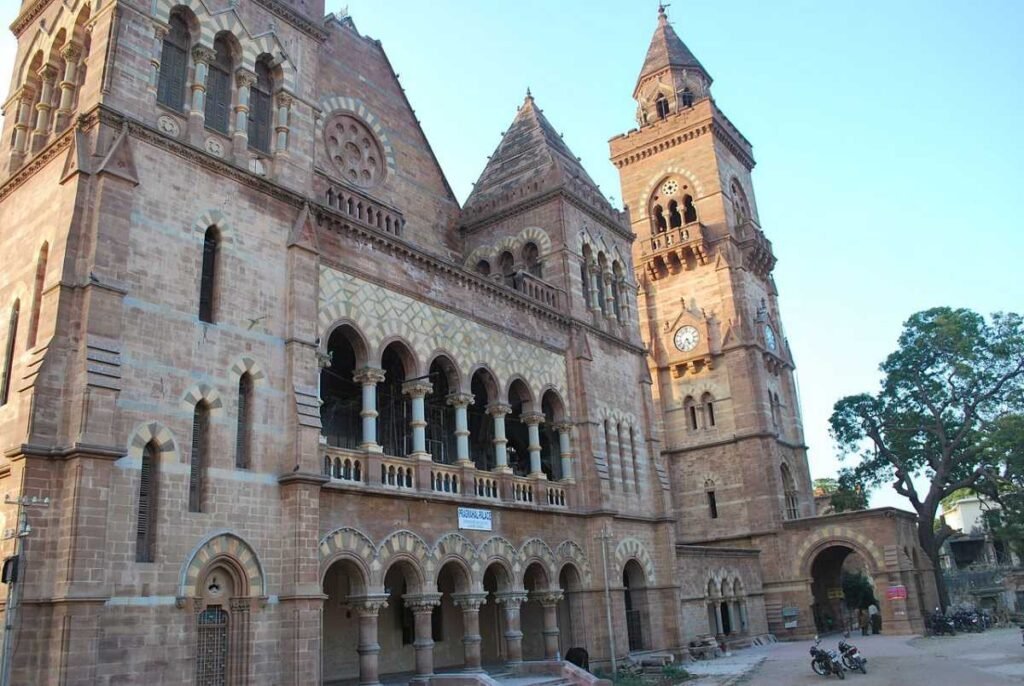
Timings : 9:00 AM – 12:00 PM, 3:00 PM – 6:00 PM
Entry Fee : Entry: INR 20,
Photography: INR 30,
Videography: INR 100
Approximately within the ethnic town of Bhuj stands Prag Mahal as one of India’s most extraordinary architectural structures. Set up in the 19th century the establishment stands alongside Aina Mahal and resides within the city center for convenient access. The grand palace boasts of Gothic-style windows and Corinthian pillars around it. Visitors can enjoy a spectacular sight from the second highest clock tower in the nation that stands in this luxurious building. The royal family’s personal items as well as archival materials now exist on display at this section of the palace which operates as a museum.
The splendid palace stands as a magnificent structure that uses red sandstone as its primary construction material. Beautiful artwork ornamented walls of this place while the elaborate jaali work on the jharokhas stands out as the most remarkable feature. Prag Mahal became famous in the Bollywood industry since it featured in numerous Bollywood movies such as Lagaan and Hum Dil De Chuke Sanam and multiple Gujarati films.
History of the Prag Mahal
The architecture received its name from King Rao Pragmalji II who was widely known in Kutch. The construction of the building started in 1865 until its completion in 1879. The Italian Gothic-designed Prag Mahal came into existence as Colonel Henry Saint Wilkins gave this magnificent structure to Rao Pragmalji II. Next to Khengarji V, several Italian craftsmen participated in the development of the Mahal. Construction of Prag Mahal involved both Colonel Wilkins and members of the Kutchi builder community. During the royal fort construction workers received payment through gold coins.
The building expenses of the palace amounted to INR 3.1 million. Although Pragmalji II envisioned the fortress construction his death happened before work finished. The 2001 earthquake caused enormous damage that affected Prag Mahal. The deterioration of both Aina Mahal and Prag Mahal became prominent because of the events that occurred. Several cracks can still be found on these buildings that trace back to the devastating earthquake from 2001. The Prag Mahal suffered an attack from burglars who damaged the structure while stealing valuable artifacts owned by the premises during the fifth year of its existence.
Best Time To Visit Prag Mahal
Prag Mahal shows its best appearance to visitors during the winter period between October through March. Visitors find the weather during this season makes the journey soothing because temperatures are moderate.
10. Bhujia Hill
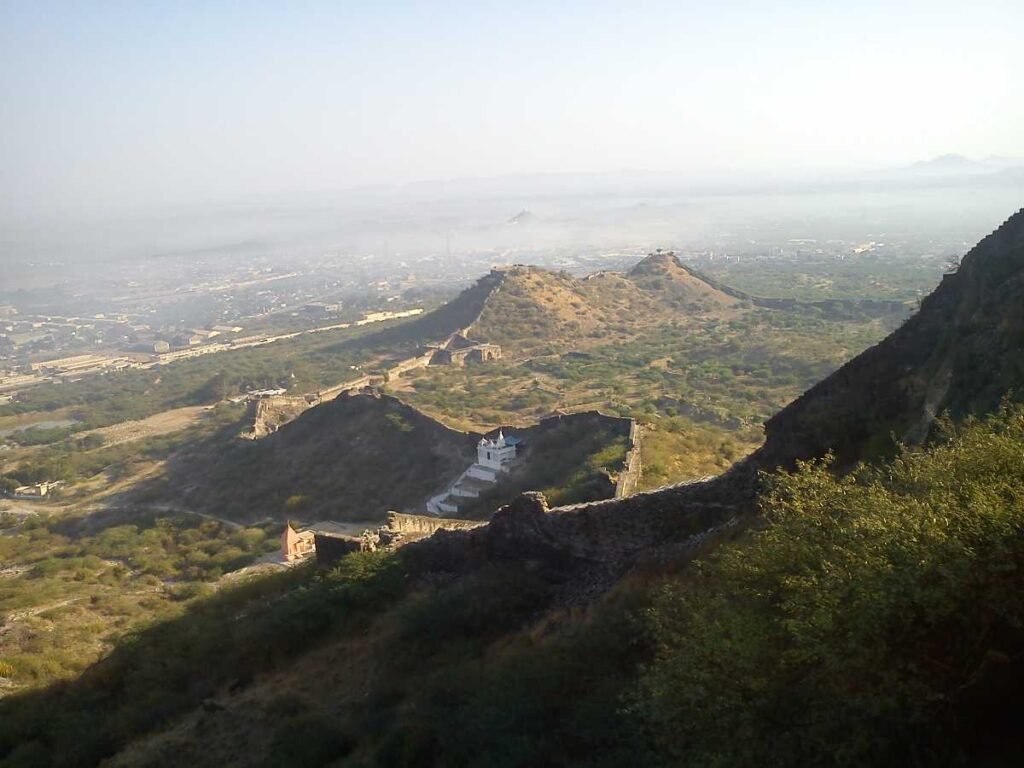
Beautiful Bhujia Hill stands above the town as a significant natural landmark which society holds in great religious and historical value. The ancient tale of Bhujanga defeating Bheria Kumar is linked with Bhujia Hill. Bhujia Fort found its perfect position on the Hill to enhance its beauty while providing defense for Jadeja Chiefs. The hill demands more than 200 stairs for anyone attempting to climb to its summit.
Bhujia Fort
During the early 1700s the Bhujia Fort emerged on top of the Bhujia Hill. The Jadeja Chiefs who ruled Kutch at that time used this hill as their main secure foundation. Six wars took place at Bhujia Fort which has since been crossed intentionally but unlawfully by people throughout history.
The worst battle in history occurred at this fort when the Nagas exercised royal power. The death of Naga chief Bhujanga led to this result. Bhujia Hill presents the Bhujang Nag Temple as an acknowledgment to the namesake of the snake deity. After independence the Indian military forces took command of the same fort.
Temples on the Bhujia Hill
The most influential temple situated at the Bhujang Nag Temple rank highest among the religious centers here. A temple devoted to the snake deity maintains a Chhatri dome structure that the Naga Sadhus constructed based on religious devotion to this Hindu deity.
The Bhujang Nag temple holds the extensively popular Nag Panchami festival that draws numerous devotees annually. Devotees gather for the Shravana month festivities of the Hindu calendar which marks the anniversary of Chhatri construction while celebrating at this busy fair.
related articles : 10 Best Places to Visit in Jamnagar for Culture, Lakes & Temples
Stay Informed With the Latest & Most Important News
Previous Post
Next Post
-
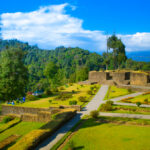 01Top 5 Best Places Visiting in Gyalshing – Monasteries, Lakes & Scenic Escapes
01Top 5 Best Places Visiting in Gyalshing – Monasteries, Lakes & Scenic Escapes -
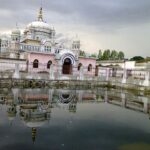 02Top 5 Best Places Visiting in Panna – Temples, Waterfalls & Wildlife Escapes
02Top 5 Best Places Visiting in Panna – Temples, Waterfalls & Wildlife Escapes -
 03Top 5 Best Places to Visit in Malerkotla – Malerkotla Fort, Sheesh Mahal & More
03Top 5 Best Places to Visit in Malerkotla – Malerkotla Fort, Sheesh Mahal & More -
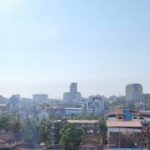 04Top 10 Best Places Visiting in Dakshina Kannad for Culture, Nature & Coastal Charm
04Top 10 Best Places Visiting in Dakshina Kannad for Culture, Nature & Coastal Charm -
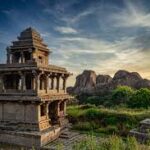 05Top 2 Best Places Visiting in Chitradurga for History, Nature & Adventure
05Top 2 Best Places Visiting in Chitradurga for History, Nature & Adventure -
 06Best Places Visiting in Shopian – Explore Top Attractions & Hidden Gems
06Best Places Visiting in Shopian – Explore Top Attractions & Hidden Gems -
 07Best Places Visiting in Narmadapuram – Temples, Waterfalls & Wildlife Escapes
07Best Places Visiting in Narmadapuram – Temples, Waterfalls & Wildlife Escapes














Pingback: 5 Best Places to Visit in Surendranagar – Complete Travel Guide